Filter by
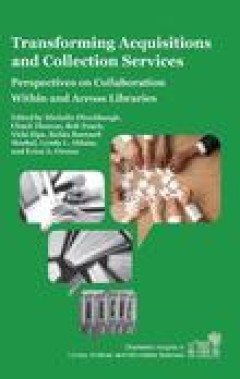
Transforming acquisitions and collection services
This book explores ways in which libraries can reach new levels of service, quality, and efficiency while minimizing cost by collaborating in acquisitions. In consortial acquisitions, a number of libraries work together, usually in an existing library consortia, to leverage size to support acquisitions in each individual library. In cross-functional acquisitions, acquisitions collaborates to su…
- Edition
- -
- ISBN/ISSN
- 9781612495781
- Collation
- XIII, 442 p.
- Series Title
- Charleston Insights in Library, Archival, and Information Sciences
- Call Number
- 025.20973 FLI t

The history and cultural heritage of Chinese calligraphy, printing and librar…
In China the tradition of a book society is longer than anywhere else in the world. Chinese paper making, calligraphy and woodblock printing date from very early ages, but have for a very long time remained almost unknown to the Western world. At the IFLA satellite meeting “Chinese Written and Printed Cultural Heritage and Library Work” in Hangzhou in 2006 the richness of present day book h…
- Edition
- -
- ISBN/ISSN
- 9783598441790
- Collation
- 251 p.
- Series Title
- IFLA Publications, 141
- Call Number
- 495.1 HIS h
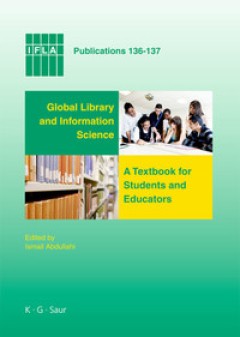
Global library and information science : a textbook for students and educator…
This book presents international librarianship and library science through insightful and well written chapters contributed by experts and scholars from six regions of the world. The role of public, academic, special, school libraries, as well as library and information science education are presented from the early development to the present time. Its lively, readable approach will help the re…
- Edition
- -
- ISBN/ISSN
- 9783598441349
- Collation
- 592 p.
- Series Title
- IFLA Publications, 136/137
- Call Number
- 027 GLO g
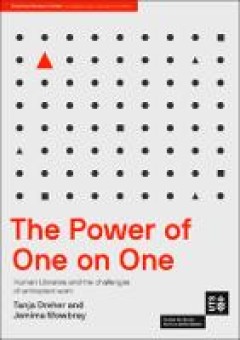
power of one on one: human libraries and the challenges of antiracism work
This book provides an overview of the innovative social inclusion initiatives known as human or living libraries. It is the first comprehensive and independent analysis of Human Libraries in Australia. The book provides an overview of Human Library practices and identifies key challenges for policymakers and practitioners while contributing to scholarly debates on anti-racism work and on the be…
- Edition
- -
- ISBN/ISSN
- 9781863654265
- Collation
- 1 online resource (ii, 72 p.: ill.)
- Series Title
- UTS Shopfront monograph series, no 7
- Call Number
- 302.12 TAN p
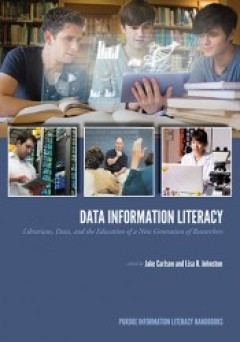
Data information literacy : librarians, data, and the education of a new gene…
Given the increasing attention to managing, publishing, and preserving research datasets as scholarly assets, what competencies in working with research data will graduate students in STEM disciplines need to be successful in their fields? And what role can librarians play in helping students attain these competencies? In addressing these questions, this book articulates a new area of opportuni…
- Edition
- -
- ISBN/ISSN
- 9781612493527
- Collation
- x, 271p. : ill.
- Series Title
- -
- Call Number
- 028.70711 DAT d
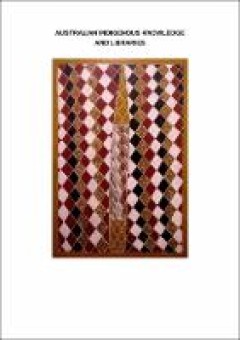
Australian indigenous knowledge and libraries
In response to significant changes in the Indigenous information landscape, the State Library of New South Wales and Jumbunna Indigenous House of Learning at the University of Technology, Sydney, hosted a colloquium, Libraries and Indigenous Knowledge, in December 2004. The two-day colloquium brought together professionals, practitioners and academics to discuss future directions in relation to…
- Edition
- -
- ISBN/ISSN
- 9780980284010
- Collation
- V, 179 p.
- Series Title
- -
- Call Number
- 027.630899915 AUS a

Atlas: Makerspaces in Public Libraries in The Netherlands
Public libraries want to contribute to an inclusive and innovative society and aim to enable their patrons to acquire the necessary 21st century skills. Dutch public libraries are therefore gradually adding more and more activities to their curriculum, teaching these different types of skills, such as ‘invention literacy’. They also often provide a ‘performative space’ (i.e. a makerspac…
- Edition
- -
- ISBN/ISSN
- 9789463661478
- Collation
- 162p.: ill.
- Series Title
- -
- Call Number
- 022.314 CAS a
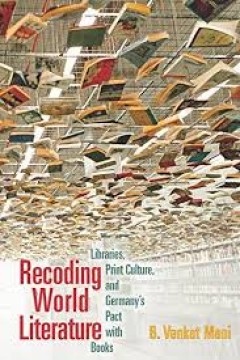
Recoding world literature: libraries, print culture, and Germany's pact with …
From the current vantage point of the transformation of books and libraries, B. Venkat Mani presents a historical account of world literature. By locating translation, publication, and circulation along routes of “bibliomigrancy,” Mani narrates how world literature is coded and recoded as literary works find new homes on faraway bookshelves. Mani argues that the proliferation of world liter…
- Edition
- First edition.
- ISBN/ISSN
- 9780823273409 (hardcover)
- Collation
- 348 pages : illustrations, maps ; 23 cm
- Series Title
- -
- Call Number
- 809.3 MAN r
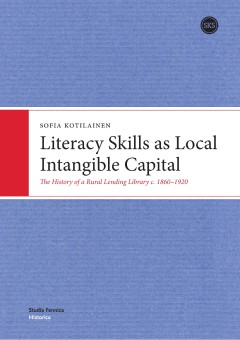
Literacy skills as local intangible capital : the history of a rural lending …
"This book studies the ”grey area” of the success story of rural lending libraries in the Nordic countries through the activities of people’s libraries in one area of Central Finland. The study explores the influence of social, cultural, geographical and economic phenomena, such as the spread of revivalist movements, on the reading habits of the local population and reveals interesting re…
- Edition
- -
- ISBN/ISSN
- 9789522227966
- Collation
- 364p. : ill.
- Series Title
- -
- Call Number
- 020 KOT l
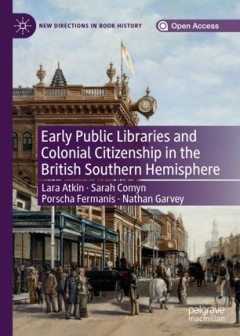
Early public libraries and colonial citizenship in the British Southern Hemis…
This open access Pivot book is a comparative study of six early colonial public libraries in nineteenth-century Australia, South Africa, and Southeast Asia. Drawing on networked conceptualisations of empire, transnational frameworks, and ‘new imperial history’ paradigms that privilege imbricated colonial and metropolitan ‘intercultures’, it looks at the neglected role of public librarie…
- Edition
- -
- ISBN/ISSN
- 9783030204266
- Collation
- XV, 159 p.
- Series Title
- New Directions in Book History
- Call Number
- 027.409171241 EAR e
 Computer Science, Information & General Works
Computer Science, Information & General Works  Philosophy & Psychology
Philosophy & Psychology  Religion
Religion  Social Sciences
Social Sciences  Language
Language  Pure Science
Pure Science  Applied Sciences
Applied Sciences  Art & Recreation
Art & Recreation  Literature
Literature  History & Geography
History & Geography